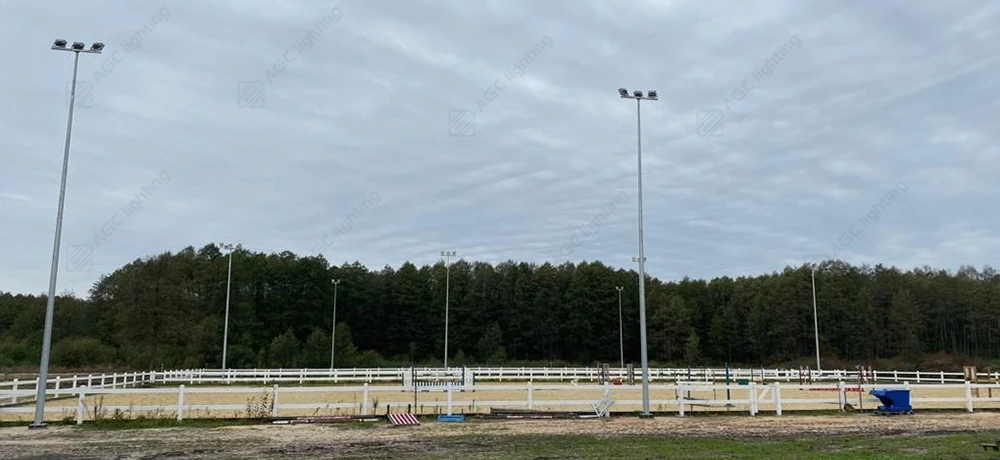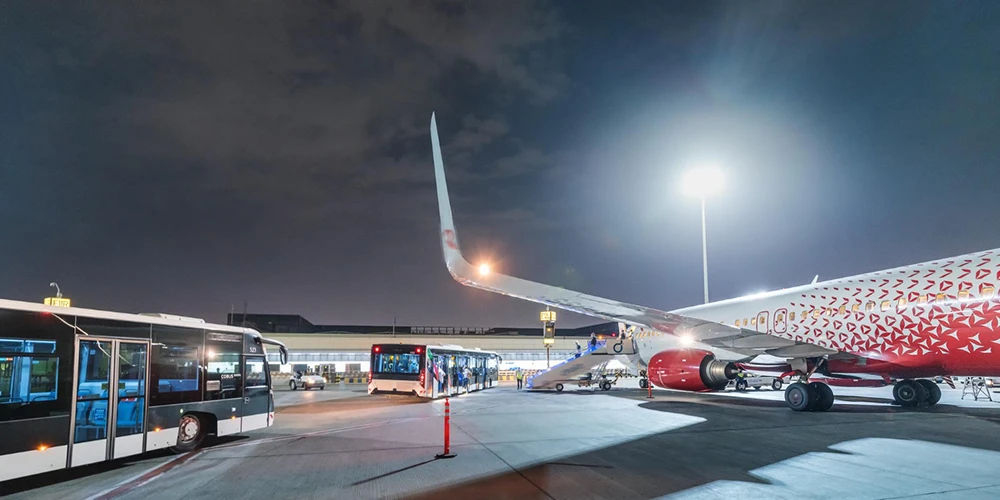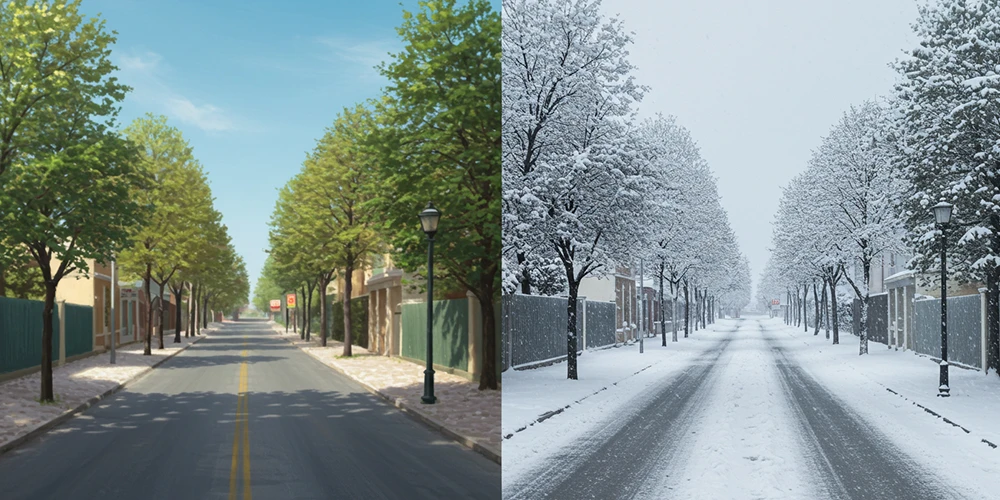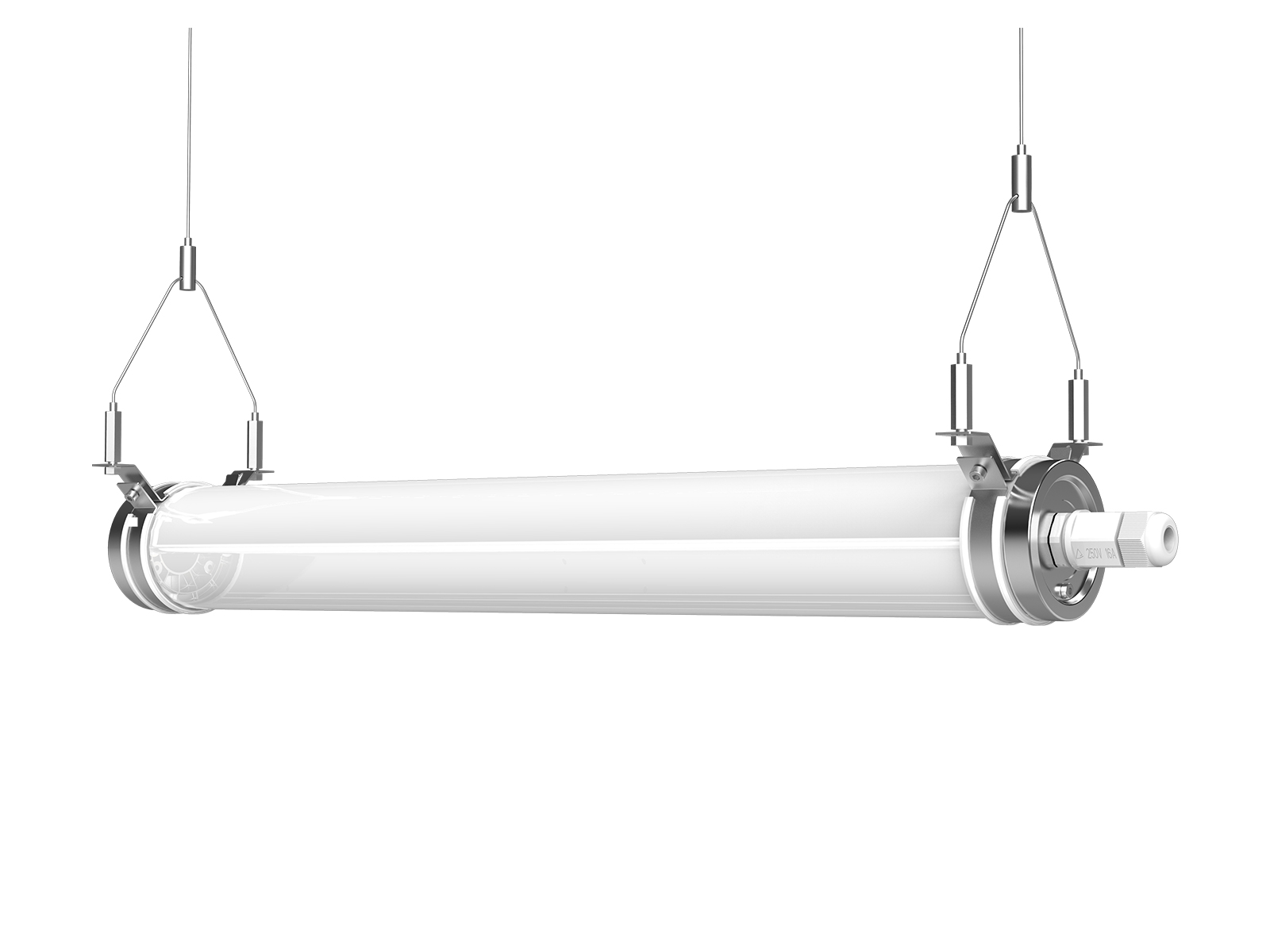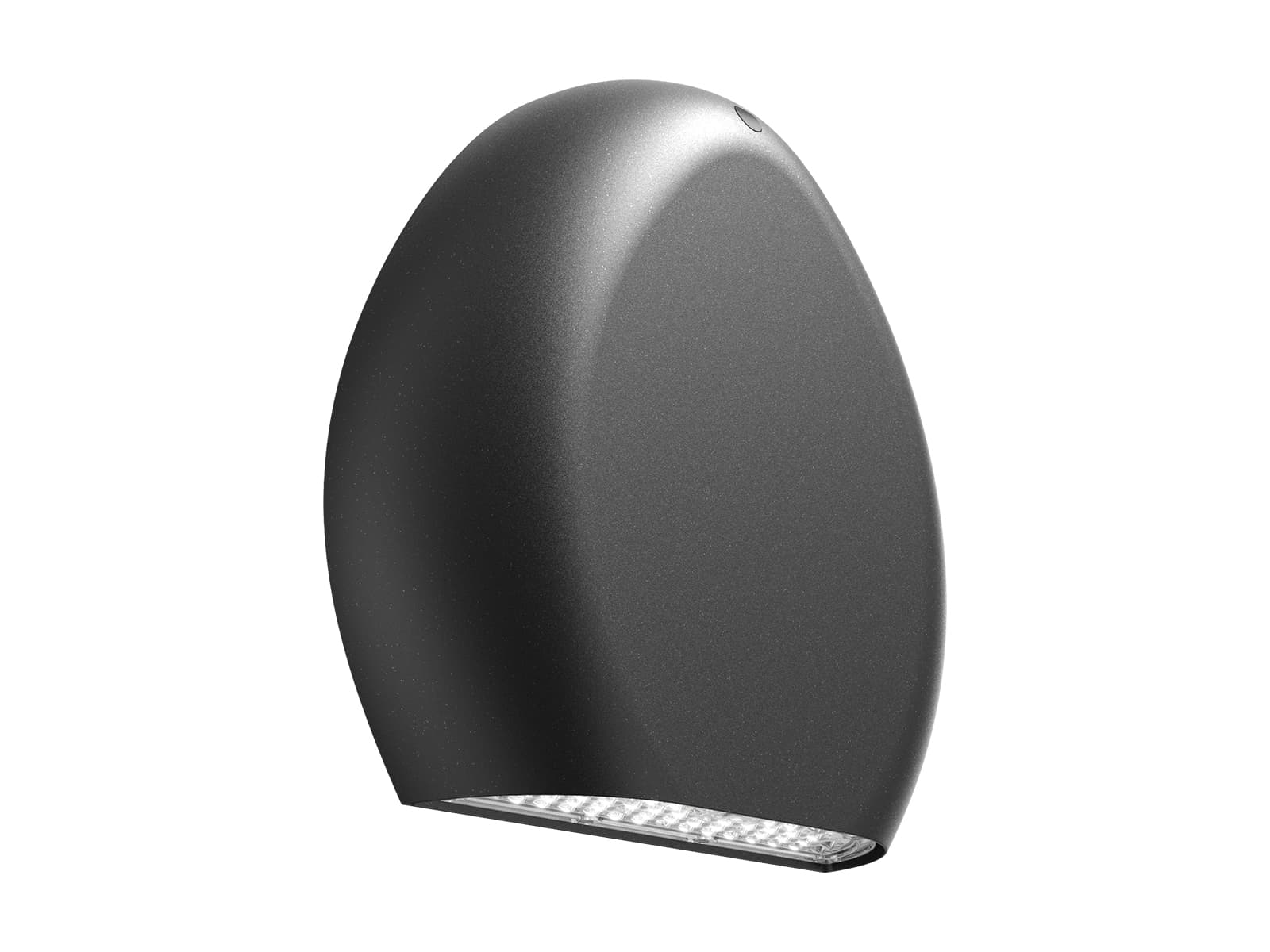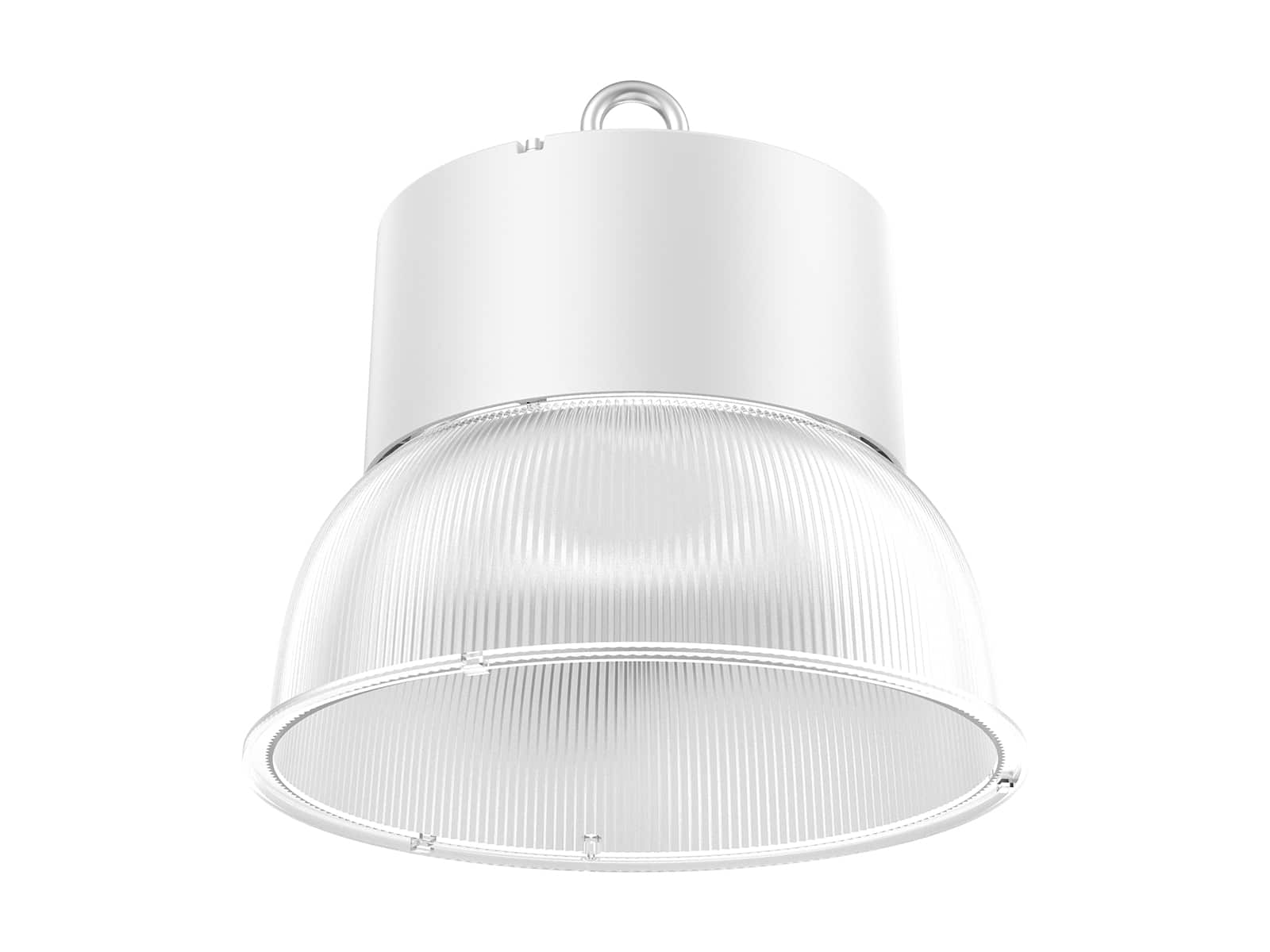Proper lighting is a crucial aspect of a horse barn, yet it is often overlooked. However, it is just as vital as ventilation, heating, and cooling—especially during the dark winter months when visibility is limited. Proper lighting in a horse stable isn’t just about seeing clearly; it’s about enhancing safety, improving the health and well-being of your horses, and creating an efficient space for handlers and riders.
In this guide, we will explore the specific lighting needs of both the horses and the barn. From exterior areas to aisles, stalls, wash racks, tack rooms, and arenas, we’ll show you how to create a well-lit, safe, and comfortable environment for your horse barn.
How horses perceive light
Horses see the world in a way that’s quite different from humans, making it important to consider their unique needs when it comes to barn lighting.
Horses are dichromatic, meaning they see only two primary colors. They are less sensitive to red light, which they perceive as darkness. This is because their eyes have fewer cones, the cells responsible for color vision.
With large eyes positioned on the side of their heads, horses have neatly 360-degree vision. This enables them to detect movement and potential threats more easily. This is especially important in a barn, where horses need to be aware of their surroundings to stay safe.
Horses also have excellent night vision. Their eyes are naturally adapted to low-light environments, allowing them to see well in the dark. However, they struggle to adjust quickly when moving from bright light to darkness. That is why a horse might hesitate or refuse to enter a dark building from bright sunshine.
Lighting needs of different areas in a horse barn
Different areas in a horse barn have unique lighting needs, and it's important to address each properly. The key to good horse barn lighting is creating a comfortable and productive space for the horses, workers, and riders. This means ensuring the lighting is both safe and pleasant. Whenever you can, go for energy-efficient lighting options—they not only create a better environment but also help save on costs in the long run.
Exterior barn
Proper lighting around the exterior of your barn is essential for safety and security after dark. Installing security lights at the entrance and near barn doors can help deter nocturnal animals from entering. Additionally, since horses struggle to adjust quickly from bright light to darkness, proper outdoor lighting ensures a safe, well-lit path when leading them in or out of the barn at night.
Dusk-to-dawn lights or fixtures equipped with motion sensors can help save energy costs. However, keep in mind that motion sensors may also be triggered by other animals. It’s important to consider your neighbors as well. Using full-cutoff wall packs, like our WP08, can prevent glare and reduce light pollution, ensuring that your lighting doesn't disturb those nearby.
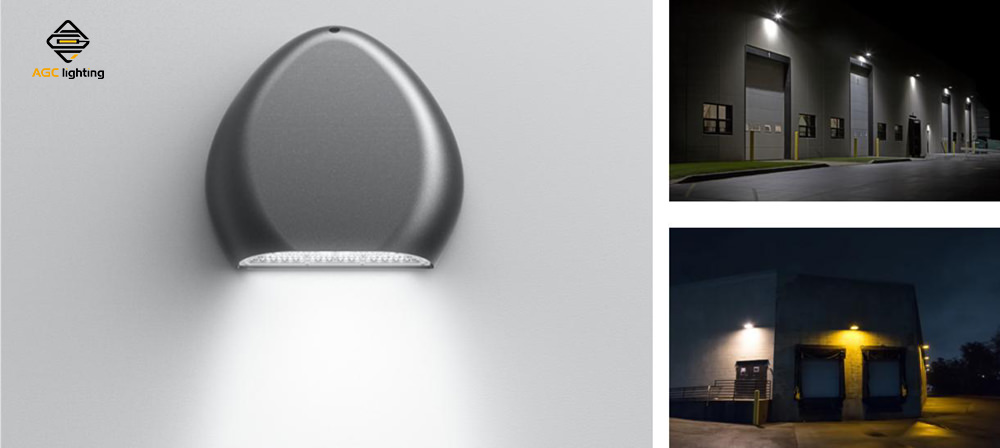
Aisle
The aisle is one of the busiest areas in a horse barn. Proper lighting is crucial for both safety and functionality. LED linear lights are a great option for this space, as their long, narrow distribution is ideal for evenly lighting the aisle while also being energy-efficient.
While it’s common to install linear lights along the ceiling in the center of the aisle, this might not be the best approach. Since horses are tall and large, a single row of fixtures will mainly light up their backs, making it difficult to work on their flanks or hooves when clipping. A more effective solution is to install two rows of lights, placed equidistant from the centerline, along the sides of the aisle. This setup provides better illumination for both the horses and the work you need to do.
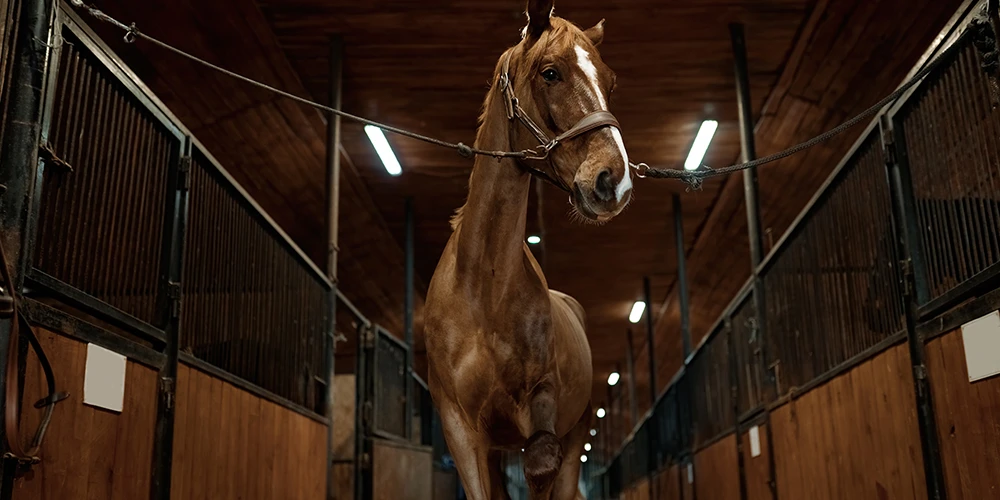
Stalls
When lighting horse stalls or stables, it's important to understand that lights can impact a horse's circadian rhythm. Proper lighting can play a crucial role in your horse breeding plans.
Day length is the primary factor regulating the seasonal reproductive cycle of mares and sperm production in stallions. During winter, sperm production typically drops to about half of what it is during the summer breeding season. To compensate for this, mares often need to be bred out of season, during winter. By extending lighting to provide around 16 hours of exposure each day, you can trick horses into believing it's summer, thereby stimulating and enhancing their breeding performance. A light intensity of approximately 100 lux is recommended for a box stall.
Another important consideration in stall lighting is protecting the fixtures from potential damage caused by horses or humans, which could lead to breakage. Additionally, the fixtures need to withstand cleaning in these damp and dusty conditions. Anti-corrosion fixtures with high IP and IK ratings are ideal for stalls. Our LHB13, with its robust plastic housing, offers superior protection with IP69K and IK10 ratings. This impact-resistant housing can withstand high-temperature water washing at up to 80°C, making it a reliable choice for demanding stable environments.
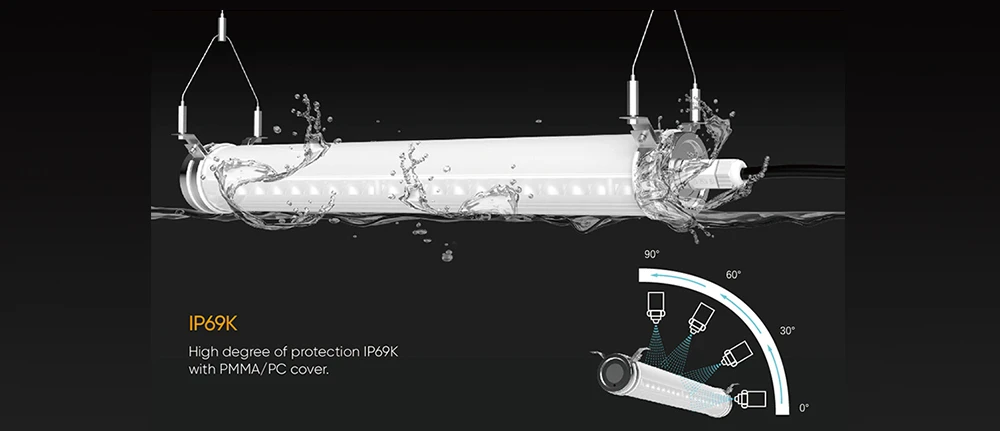
Wash racks
Wash racks are places for cleaning and grooming horses. These areas require bright, even illumination, while also needing to withstand moisture and potential water splashes.
For optimal visibility in wash racks, aim for light levels of about 300lux. This brightness ensures you can spot any dirt, injuries, or skin issues while bathing or grooming horses. A combination of overhead fixtures and wall-mounted lights is recommended to minimize shadows and provide even, consistent lighting.
Similar to stall lighting, select lighting fixtures with high IP and IK ratings to ensure safety in these moisture environments. Additionally, install lighting high enough to void house slipping or bumping into fixtures.
Tack rooms
Tack rooms serve as warehouses for saddles, bridles, and other equipment. Adequate lighting is crucial to ensure safety, organization, and ease of use. They require an illuminance of 300-400lux for cleat visibility of tack and equipment. To enhance energy efficiency, motion sensors can be installed to automatically light up the space when someone enters. Although this is helpful for your nighttime visits, it may also be unintentionally activated by other animals.
Arenas
Proper lighting in horse arenas is crucial for ensuring safety and enhancing performance during both training and competitions.
For indoor arenas, adequate lighting is essential for safe riding. The required light levels vary depending on the type of event. Professional arenas may need up to 700lux, while standard training typically requires around 300 lux. If the training involves obstacles like jumps, a light intensity of 400 to 500 lux is recommended.
Shadows can create unsettling environments for horses, so even lighting distribution is vital in arenas. To minimize glare and shadows, we use our HB18 high bay lights. Equipped with PC reflectors and professional optics, these lights deliver soft, evenly distributed illumination across the arena.
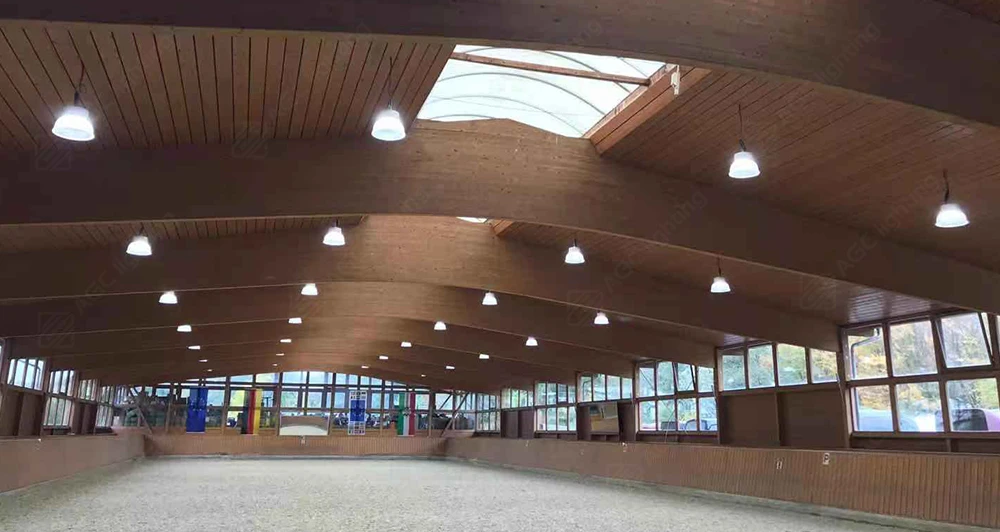
For outdoor arenas, high mast floodlights are ideal for covering large areas. A color temperature between 4000K and 5000K provides natural light, maximizing visibility and ensuring the arena is well-lit. Additionally, lighting fixtures should be durable enough to withstand harsh outdoor conditions.
